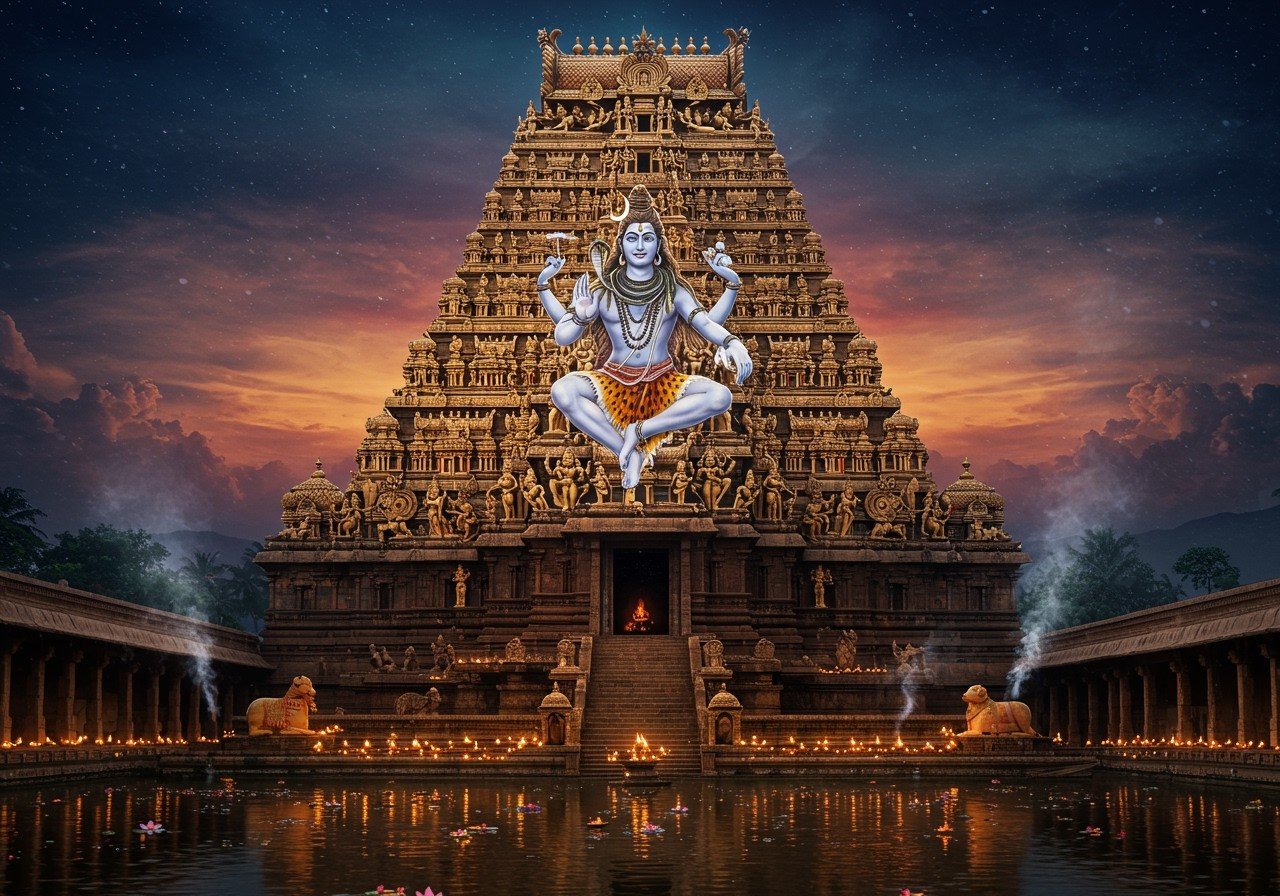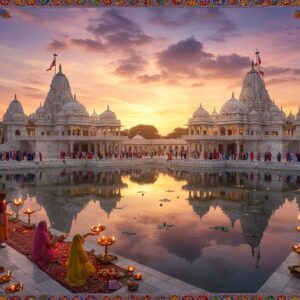
South India, a land steeped in spirituality, is renowned for its magnificent Shiva temples. These sacred spaces are not merely places of worship; they are vibrant centers of faith, culture, and history, each echoing with centuries of devotion and architectural brilliance. Built by dynasties like the Cholas, Pallavas, and Chalukyas, these temples stand as testaments to artistic skill and deep-rooted spirituality.
Exploring the Architectural Wonders
South Indian Shiva temples boast unique architectural styles, often featuring towering gopurams (ornate gateways) and intricate carvings that depict stories from Hindu mythology. The garbhagriha, the sanctum sanctorum where the Shiva lingam resides, holds profound symbolic importance. The architecture itself facilitates rituals like pradakshina (circumambulation), allowing devotees to express their reverence. The skilled artisans of the past employed materials like granite and sandstone, showcasing exceptional craftsmanship that has withstood the test of time. Take the Brihadeeswarar Temple in Thanjavur, for example, a marvel of Chola architecture reflecting cosmological concepts.
Cultural Impact and Significance
These temples have profoundly impacted South Indian culture. They are not just religious centers but also community hubs. They play a significant role in promoting classical art forms like Bharatanatyam and Carnatic music. Festivals like Maha Shivaratri draw thousands of devotees, creating a vibrant tapestry of faith and tradition. They also contribute to the local economy through religious tourism and by supporting local artisans and craftspeople. Temples often serve as repositories of ancient texts and teachings. Even today, temple traditions have seamlessly woven their way into modern lifestyles, showcasing the remarkable adaptability of South Indian culture.
Rituals and Practices: A Spiritual Journey
Daily rituals and ceremonies in Shiva temples hold deep meaning. Abhishekam (ritual bathing) and the application of vibhuti (sacred ash) are integral parts of worship. Dedicated priests and temple staff meticulously maintain the sanctity of these rituals. Devotees find solace and spiritual connection through meditation, chanting, and prayer. While core practices remain consistent, rituals can vary across regions and different sects of Shaivism. From the lighting of lamps to the resonant sound of temple bells, every element carries spiritual symbolism, enriching the devotee’s personal journey.
A Glimpse into Famous South Indian Shiva Temples
- Brihadeeswarar Temple, Thanjavur, Tamil Nadu: Also known as the “Big Temple,” a UNESCO World Heritage Site, it exemplifies Chola architecture. Its towering vimana and intricate sculptures are a sight to behold.
- Ramanathaswamy Temple, Rameswaram, Tamil Nadu: One of the twelve Jyotirlinga temples, it’s deeply connected to the Ramayana. It features the longest corridor among Indian temples, a unique architectural feat.
- Meenakshi Amman Temple, Madurai, Tamil Nadu: Dedicated to Goddess Meenakshi (Parvati), it also houses the Sundareswarar (Shiva) shrine. Known for its vibrant gopurams and lively festivals, it’s a celebration of color and devotion.
- Chidambaram Nataraja Temple, Tamil Nadu: Lord Shiva is worshipped here as Nataraja, the cosmic dancer. The Chidambara Rahasya (Secret of Chidambaram) represents Shiva’s formlessness and cosmic dance, a profound philosophical concept.
- Arunachaleswar Temple, Thiruvannamalai, Tamil Nadu: Representing the element of fire among the Pancha Bhoota Stalas, this temple is a significant pilgrimage site. Built by the Chola Dynasty in the 9th century, it stands as a testament to their architectural prowess.
- Virupaksha Temple, Hampi, Karnataka: A UNESCO World Heritage Site, it’s one of India’s oldest functioning temples. Dedicated to Virupaksha (a form of Shiva), it seamlessly blends history with active worship.
You can explore more about South Indian temples with our guides: Kurmanathaswamy Temple: A Pilgrim’s Complete Guide and Southern Char Dham: A South India Spiritual Journey. These resources offer insights into the history, significance, and practical aspects of visiting these sacred sites.
Poojn.in: Your Companion on the Spiritual Path
At poojn.in, we understand the deep significance of these rituals and traditions. We offer a curated selection of authentic puja items, sourced with utmost care and reverence, to help you create a sacred space in your home.
Here are some items that can enhance your Shiva puja:
- Adiyogi Marble Dust Murti: Bring the powerful presence of Adiyogi into your home with this beautifully crafted murti.
- Lord Shiva Marble Dust Murti: A serene and elegant murti of Mahadev for your personal altar.
- Clay Ghat for Puja: Use this traditional clay ghat for offerings during your Shiva puja.
Visit poojn.in or contact us at 03369029784 or WhatsApp us at 9476142738 to explore our complete collection and bring the blessings of Shiva into your life.
Embracing the Divine Legacy
The Shiva temples of South India are more than just structures; they are living embodiments of faith, culture, and history. They offer a glimpse into the rich tapestry of South India’s spiritual heritage, inviting us to connect with the divine. Whether you seek blessings, historical insights, or simply a moment of peace, these temples welcome you with open arms. Let us cherish and preserve these divine legacies for generations to come.


